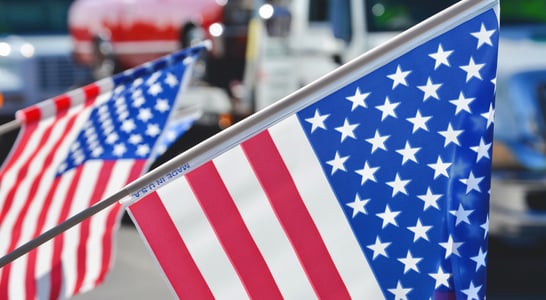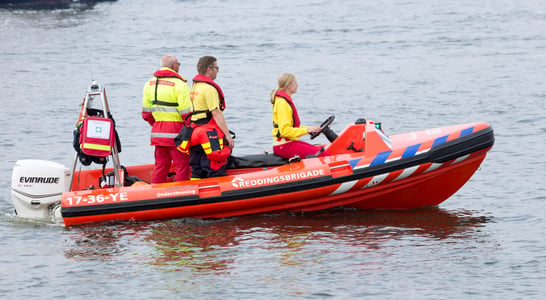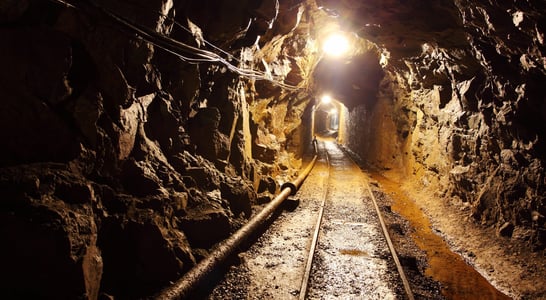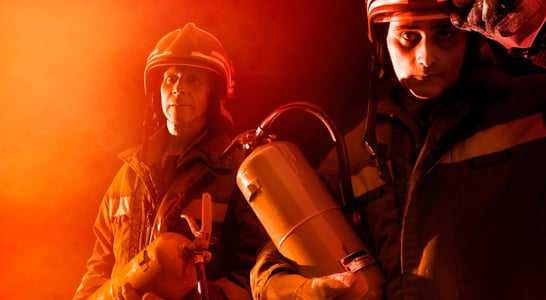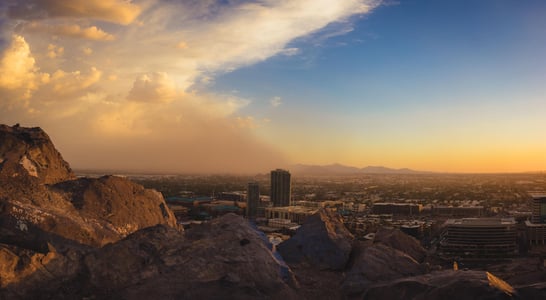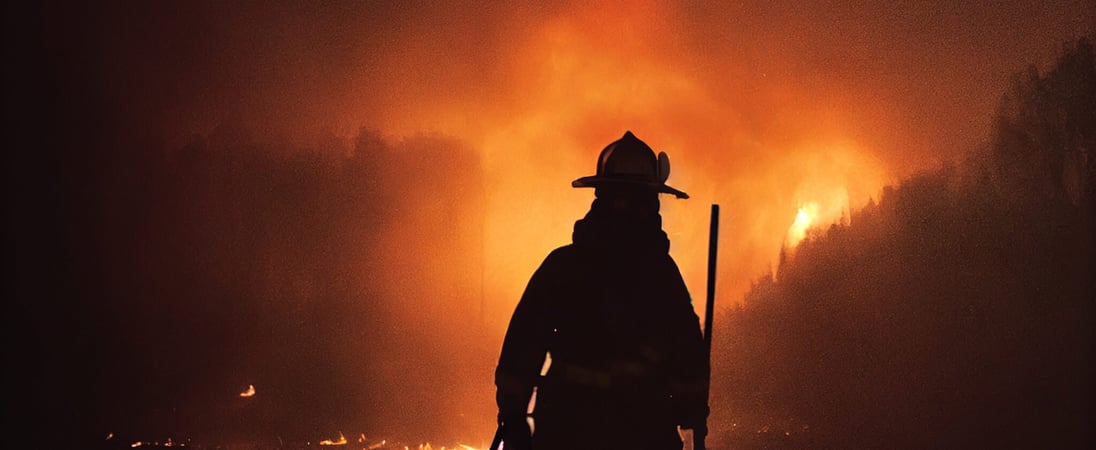
National Wildland Firefighter Day
Fearless individuals battling nature's fiery tantrums, their bravery etched in the scorched landscapes they protect and preserve.
Wildland firefighters work hard every day to protect private and public lands along with infrastructures, natural resources, cultural landmarks and other important features through extremely challenging conditions.
National Wildland Firefighter Day brings these important men and women to the forefront to offer them appreciation and respect!
How to Celebrate National Wildland Firefighter Day
Show some care and appreciation for those who work so hard to protect people, animals and all sorts of resources from the devastation of wildland and forest fires. Consider some of these ways to get involved with National Wildland Firefighter Day:
Support National Wildland Firefighter Day
Communities, individuals and groups who are interested in hosting events or raising awareness about National Wildland Firefighter Day can access resources and toolkits offered on the National Interagency Fire Center website.
These resources can help schools, government agencies and more to show support through social media campaigns, postcards, activity books, posters and other useful tools to gain support.
Learn What to Love About Wildland Firefighters
Looking for things to appreciate in honor of National Wildland Firefighter Day? Check out some of these:
- Wildland firefighters are spontaneous, adaptable and flexible
- Wildland firefighters are brave and courageous, entering into dangerous situations
- Wildland firefighters are organized and prepared in a wide range of situations
- Wildland firefighters make up a supportive and loyal community
Become a Wildland Firefighter
Those men and women who are interested in getting more involved with helping to save forests, property and even lives, can consider training to become a wildland firefighter as a career.
Different training programs and apprenticeships may be available for those who qualify. The United States Department of Agriculture (USDA) Forest Service hosts an apprenticeship program that helps to develop and enhance future leaders in wildland fire control, management and suppression.
History of National Wildland Firefighter Day
Wildland firefighters can work for all sorts of different entities, whether through federal, state and local governments, or as military, rural, Tribal, contract or even support personnel. No matter which connection they have, the people who fight wildland and forest fires go through rigorous training and put their lives on the line each time they go to work.
The inaugural National Wildland Firefighter Day was celebrated in 2022 when the day was established through the efforts of the National Interagency Fire Center’s Fire Management Board. The purpose behind this day is to show honor and appreciation to the men and women of the nation who risk their lives to fight wildland and forest fires, protecting natural resources, property and lives.
National Wildland Firefighter Day seeks to honor the people who continue to fight wildland fires, as well as those who have lost their lives.
In fact, it is situated at this time because it falls in July during the Week of Remembrance for fire safety, where the fallen firefighters are honored. This is an important time to show support for family members, team members and other loved ones who hold the memory of a fallen wildland firefighter.
National Wildland Firefighter Day FAQs
How did the term “smokejumper” originate in wildland firefighting?
The term “smokejumper” refers to specialized wildland firefighters who parachute into remote areas to combat fires.
This practice began in the 1940s in the United States to quickly reach and suppress wildfires in inaccessible regions. The first official jump occurred in 1940 on Idaho’s Nez Perce National Forest.
What unique traditions do wildland firefighters observe to honor their fallen comrades?
Wildland firefighters honor their fallen through various traditions, such as the “Last Alarm” ceremony, where a bell rings in sequences of three to symbolize a firefighter’s final call.
Additionally, during memorial services, it’s customary to display a pair of crossed Pulaskis (a firefighting tool) to represent the profession’s sacrifice and commitment.
Are there any misconceptions about wildland firefighting?
A common misconception is that wildland firefighters only combat fires during the summer.
In reality, they work year-round, engaging in activities like controlled burns, training, and forest management to prevent future wildfires.
Another myth is that all wildland firefighters are men; however, women have been and continue to be integral members of firefighting crews worldwide.
How do different countries celebrate and honor their wildland firefighters?
In Australia, National Emergency Services Week includes events recognizing wildland firefighters’ efforts, featuring parades and community barbecues.
In Canada, Wildfire Community Preparedness Day encourages public participation in wildfire prevention, honoring firefighters through educational activities.
What role do indigenous communities play in wildland firefighting traditions?
Indigenous communities have long practiced controlled burns, known as cultural burning, to manage land and prevent larger wildfires.
These traditional methods reduce fuel loads and promote ecosystem health.
Today, many wildland firefighting agencies collaborate with indigenous groups to incorporate these time-tested practices into modern fire management strategies.
What are some unique tools used exclusively in wildland firefighting?
The Pulaski, a tool combining an axe and a hoe, was invented in 1911 by Ed Pulaski, a U.S. Forest Service ranger, specifically for wildland firefighting.
Another tool, the McLeod, features a rake on one side and a hoe on the other, ideal for constructing fire lines.
These specialized tools are essential for effectively managing and suppressing wildfires.
How has technology transformed wildland firefighting in recent years?
Advancements such as drones equipped with infrared cameras allow firefighters to detect hotspots and assess fire behavior from the sky.
Additionally, GPS technology enables precise mapping of fire perimeters, improving strategic planning and resource allocation during wildfire incidents.
What are some lesser-known challenges wildland firefighters face during their duties?
Beyond battling flames, wildland firefighters often contend with extreme weather conditions, wildlife encounters, and rugged terrain.
They may work in remote areas without immediate access to medical facilities, requiring them to be self-sufficient and prepared for various emergencies.
How do wildland firefighters maintain physical and mental health during fire season?
Firefighters adhere to rigorous fitness regimes to endure the physical demands of the job.
Many agencies provide mental health support, including counseling and stress management resources, recognizing the psychological toll of prolonged deployments and high-risk situations.
Peer support programs also offer avenues for sharing experiences and coping strategies.
What are some surprising facts about the history of wildland firefighting?
In 1945, the U.S. Army deployed the 555th Parachute Infantry Battalion, an all-Black unit known as the “Triple Nickles,” as smokejumpers to combat wildfires in the Pacific Northwest.
This marked the first use of military personnel in wildland firefighting.
Also on ...
View all holidaysWorld Tutors’ Day
Experts guiding learners, enhancing understanding, and igniting curiosity to excel academically and unlock their full potential in education.
World UFO Day
Gather with other UFO enthusiasts to swap stories and watch the night skies, or fire up a classic like First Encounters of the Third Kind or The X-Files.
Made In The USA Day
Exploring quality, supporting local craftsmanship, and embracing American-made excellence for a sustainable and authentic shopping experience.
We think you may also like...
U.S. Coast Guard Birthday
Show your support for the brave men and women of the US Coast Guard who put their lives on the line to save ours, from fishing boats accidents to hurricanes.
National Miners’ Day
Digging deep, they unearth treasures from the belly of the earth, a relentless pursuit of resources that fuels progress and innovation.
International Firefighters’ Day
Firefighters put their lives on the line every day to save our lives, loved ones, homes, and even forests and cities, so give them the thanks they deserve.
International Day of Combating Sand and Dust Storms
Defending against nature's turbulent dance, where winds showcase Earth's dynamic forces through swirling sands and atmospheric drama.



